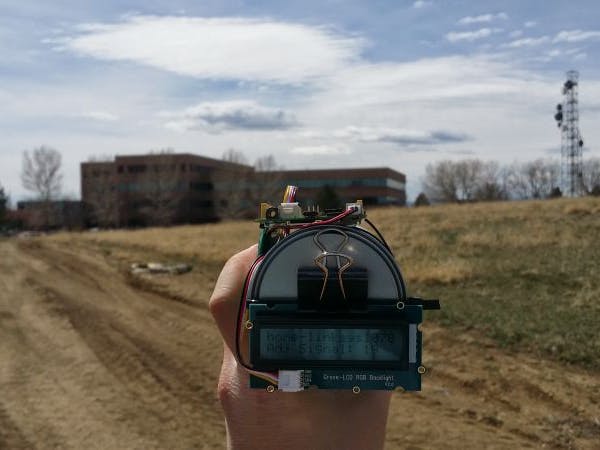With my never-waning obsession with wardriving, I wanted to make something that played off it that anyone could use. I've seen can antennas over the years, and wondered about making one.
So I did. And here it is.
Materials:
- Zip ties
- Pringles can
- Linkit ONE
- Grove RGB screen
- Big paper clip
How I made it:
First I looked at how the cantennas were made online. They were not only putting the antennas in the can, but they were actually making a Yagi. This was something I decided I was not going to do. Too much effort, and not enough time. I put a zip tie through the can right below the nutritional information, as this is where I saw the true builds place their entry point. I connected the zip tie around the outside, and pulled it taught. This would be the base of our antenna's location.
I then attached the antenna towards one of the in-can portion of the zip tie, making sure I had enough of the tail to comfortably attach to the LinkIt without strain. Last thing I needed to do was to break my wifi card. With that in place, I connected the antenna to the LinkIt, and the placed the LinkIt against the can, and put one zip tie on snugly to keep it from going anywhere. I tucked the battery into the left side, allowing just enough wire length to connect it.
The last and final piece is the screen. Here I did a loop of a zip tie through the end of the can, then held it in place with a large paper clip. I felt that the way I did it encompassed the “hacker" mentality of doing what's needed to get the job done.
The code:
The code I wrote is an adaptation of the wifi scan. There's three different versions of the code. First is to roll through all the 2.4gHz networks on the screen. The second is to exclude some. Since I work where there are many APs, this was my main code. Then when I did my actual testing, I filtered my results to only display one AP's signal.
On boot up, I also have the screen show the battery percentage, as I wanted to make sure I had enough juice. I'm still at 100% after almost an hour of testing. The LinkIt is a beast.
Testing Method:
I wanted to test the effectiveness of the antenna, so I grabbed my second LinkIt (Thank you Seeed!), put it in my coveted Lego v3 case, and had it report my location, along with its signal strength. No reflectors of any kind were used. I had it report to my computer, and I recorded the data into Excel. I set the router up next to the window to give be the best chance to see it with my equipment. No mods were done to my stock WRT54GS, and it was transmitting at its stock wattage (75mWs or so).
Testing out in the field:
I literally walked out into a field and parking lot to see how far it would work. The graph below shows my results by distance:
Conclusion:
As we can see, there's a noticeable difference in signal strength at the further distances, with the can providing a higher signal level at all distances (except the fluke at 206m, IDK, maybe because I was on a hill?). The main thing to note is that the antenna in the can provided a solid signal, while the unshielded antenna was spotty. Quality of the signal was noticeable. Overall, a Pringles can over your antenna will help you maintain contact from a long distance.
Future plans:
I plan on making a proper logger for the LinkIts so that it records their location along with the signal strength so I can do a scatter plot. This should show the quality of the data, not just the theoretical maximum.





Comments
Please log in or sign up to comment.